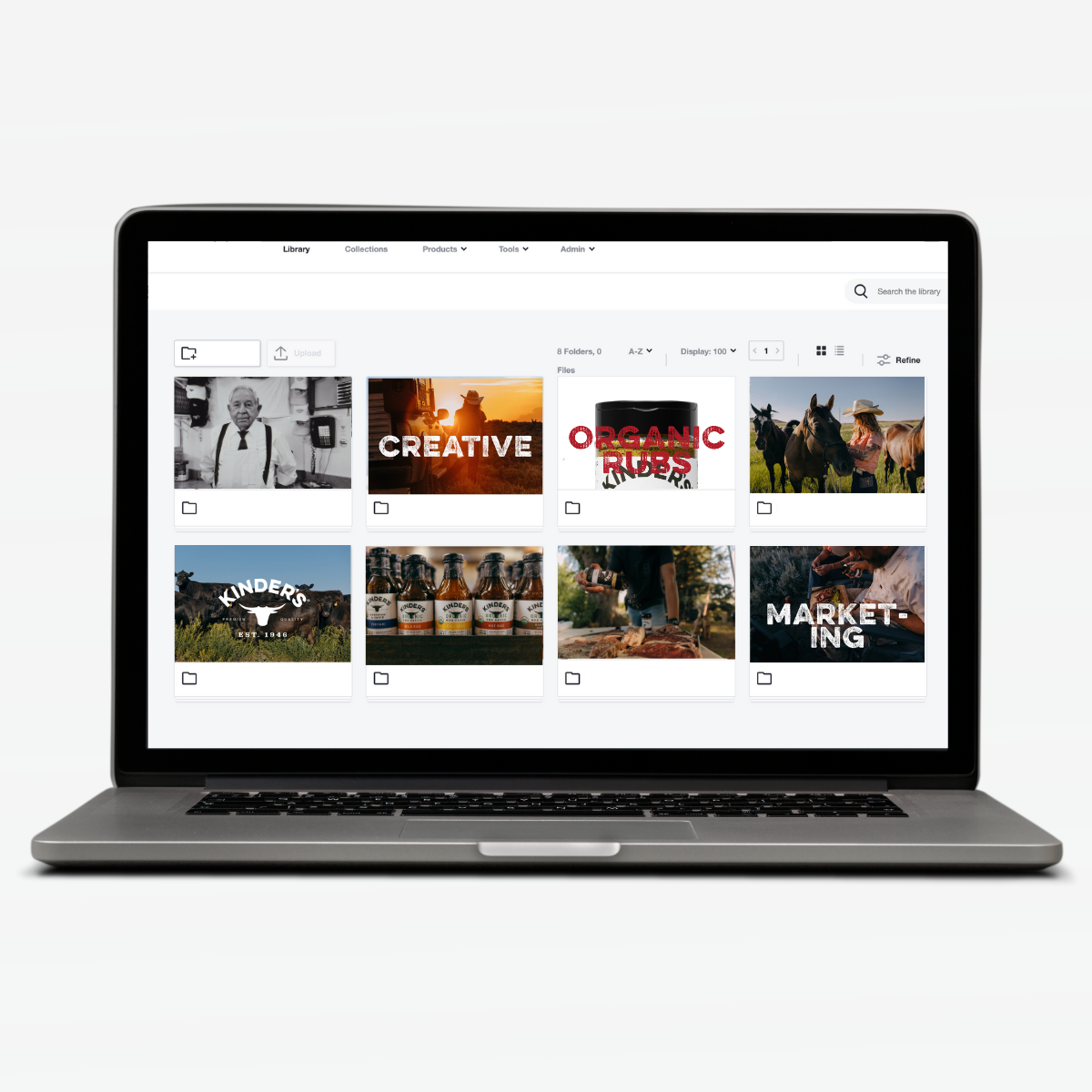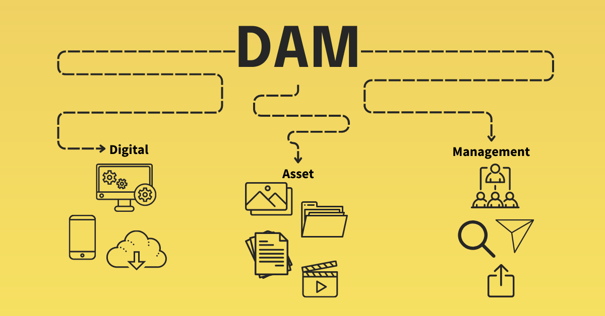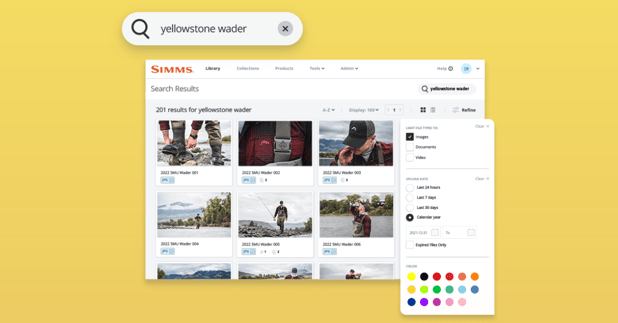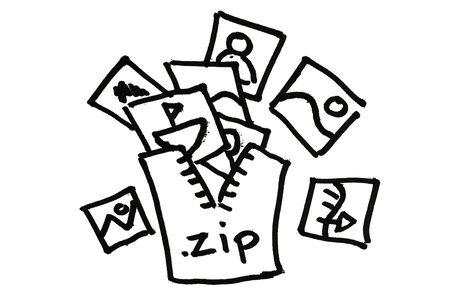What is Digital Asset Management (DAM)?


What is Digital Asset Management (DAM)?
Digital asset management (DAM) is software that allows an organization to store, organize, manage, find, and share their digital content from a single location.
That's the simple definition, but for your daily work life it can mean a lot more than that.
Digital asset management can be how you get your time back.
But how?
In this article you will learn:
- What is digital asset management
- How digital asset management saves time
- Who benefits most from digital asset management
- Other forms of digital assets

How Digital Asset Management Saves Time:
1. Digital Asset Centralization
Digital asset management means every piece of content is in one place. There's no more checking the shared drive, then Google Drive, then Dropbox, then asking your colleague, or going through your desk to find an old thumb drive, or, worse yet, trying to search through your email for an old attachment.
With a central location, digital asset management can give you a single source of truth for your content.
2. Digital Asset Organization
In addition to all your content being in one place, your content is also organized, exactly how you want it to be for your team.
There aren't hundreds of personal folders messing up the view for everyone else. By utilizing a straightforward folder structure or relying on descriptive tags, everyone can browse through and find the content they need, exactly where it should be!
3. Digital Asset Search
Digital asset management also makes your content more usable.
You can't use what you can't find, and most online storage options don't make things easy to find. Have you ever tried searching through a Google Drive or Dropbox with a lot of files in it?
You know what that can mean . . . buckle up for some frustration. With digital asset management, you can apply tags, descriptions, and other metadata (more about that below) to make your content actually findable. And when something can be found, it can be used.
After all, isn't the point of creating all this content to actually use it?
4. Self-Service
Another benefit of digital asset management is that it gives the right people access to the right content, and allows those people to find and use that content.
You no longer have to field dozens of file requests per day because someone can't find something or because they don't have access to something they should have access to. It's called self-service, and with the permission and access tools digital asset management provides, people can go in and get the content for themselves.
And the even better part?

They only have access to the content you want them to have access to. You don't have to worry about someone using an old logo because they only have access to the new, approved stuff.
Put that all together and that can mean an extra hour or two back in each day to do the things you should be doing or want to be doing.
But what is the content that we're actually trying to manage?
If you go online and visit any site you’ll see them. You’ll likely see thousands of them in just a few minutes. They are digital assets, and they are everywhere in our digital lives.
- Every image you see
- every ad blasted your way
- every document you can download
- every video
- every logo
They are all digital assets.
If you’re reading this, you most likely are interested in the types of digital assets used in common digital asset management applications. That means, photos, videos, documents, audio files, PowerPoint files, excel files, logos, design files, and other files most often used in everyday business.
What is a Digital Asset?
Ralph Windsor, a leading digital asset management expert, defines a digital asset as “a collection of binary data which is self-contained, uniquely identifiable and has a value.”
This comprehensive definition covers all of the common types of creative content such as images, videos, logos, creative files, and documents, as well as other types of digital assets that go beyond these more common types.
Let’s break it down. There are four parts to that definition.
1. Binary data
These 1s and 0s of binary data are what make the thing digital. For a computer to understand it, it needs to be binary.
2. Self-contained
To be a digital asset it must be a complete unit.
A random and partial string of code plucked from a website or piece of software is often not self-contained and wouldn’t qualify for this definition.
Image files, videos, documents - all of these are self-contained units that can be stored and transferred.
3. Uniquely identifiable
If you can’t find it, you can’t use it, and it’s tough to call something an “asset” that you can’t find or use.
For digital assets, making something identifiable is where metadata comes into play. Metadata is information about your information.
It provides context to your files and makes them identifiable, searchable, and usable. That can start with just a file name, and can also include embedded metadata and other metadata that a digital asset management system may apply.
4. Has a value
To be an “asset,” that thing has to have value.
The amount of that value depends on a number of factors including cost to create or license, the importance to the brand (for example, a logo is more important than a single lifestyle shot from a photo shoot), the goodwill it represents, and other factors. The company or organization who owns the asset is in the best position to assign some specific value.
A fundamental part of an asset’s value is the ability to use it and re-use it. The photograph that got lost on a thumbdrive has a lot less value than the video file that has been shared thousands of times.
For your company or organization, all of your valuable digital content would be considered digital assets.
Digital Assets and Metadata
To make digital assets identifiable and valuable, metadata is critical. Metadata is data about data. It’s the information and context that allows you to find assets during a search and use them appropriately.
To learn more about how metadata can help you organize, find, and use your assets, please read our two-part series on the basics of metadata.
Other Digital Assets
“Digital asset” also refers to the digital entities that have a specific financial value associated with them.
The most common types of “digital assets” of this type are the various cryptocurrencies:
- Bitcoin
- Litecoin
- Ethereum
- NEO
- Ripple
And thousands of others... including an upcoming and controversial offering from Facebook called Libra are all cryptocurrencies.
They all meet the same “digital asset” definition of being digital, self-contained, identifiable, and valuable, but how they are used is quite different than creative content “digital assets.”
These differences between types of digital assets may increase confusion in the future so it’s important to understand that not all digital assets are the same and you should consider the context.
If marketing and creative-related, it’s probably one type, but if talking about finance, it could be another type.
Who Benefits From Digital Asset Management?
Marketers
Marketing departments often need a “brand central” to house all logos, fonts, guidelines, and campaign assets.
From this system they can distribute assets, collaborate in house, and work with agencies and outside vendors.
Designers and Photographers
Designers and photographers are usually the ones creating the assets, or at least the underlying elements of the assets.
Keeping these files organized, accessible, searchable, and shareable is a top priority, which makes designers and photographers some of the heaviest users of digital asset management.
Event Managers
Event managers have to manage all types of work for the organization, supporters, and sponsors.
The amount of content for internal communications and external distribution, even for a small event, is enormous, and a DAM can help keep everyone organized.
Retailers
When carrying hundreds or thousands of products, a retailer needs access to product information and marketing collateral. Access to information in a DAM helps the retailer sell goods from various brands and keep inventory information up to date.
Product Managers
Product managers have to manage teams, sponsors, workflows, and a lot of content.
They can manage this content and the important underlying metadata, like product ID, SKU, or copyright information, in a DAM.
Information Managers
Information managers are tasked with the management and security of the company’s assets.
A DAM allows for the organization of the files and the management of metadata, and perhaps, more importantly for an information manager, a DAM provides control of users.
Sales Managers
Sales representatives often have to make a presentation on the fly, and they need quick access to brand assets.
They can grab assets on the go and share with a prospect or a distributor all while the central sales office works with marketing to ensure brand consistency and proper user access.
Manufacturers and Distributors
Those working in manufacturing and distribution have to work with sales and may also have a network of retailers who need to self-serve for a variety of purposes.
A DAM allows everyone to have appropriate access and for the company to maintain brand cohesion across a handful or thousands of users.
Human Resources
Digital assets don’t stop at creative assets used for selling products and services. One area is human resources where employee handbooks, company policies, and other forms can be stored and shared company-wide or with whichever groups of employees you choose.
Managing digital assets

The value you can get from digital assets is only as good as your ability to effectively manage and use those assets.
That’s where a digital asset management system can come in.
It’s the best tool to keep your assets organized, make them findable by the people who need them, allow them to be use
d and reused, and also understand how your assets are used so you can make adjustments for new asset creation.
There’s a lot that goes in to digital asset management and here are some guides on how to get started:
- Understanding what your team needs.
In this blog post, you will learn more about how to get started with digital asset management. From finding out what your team is challenged with to understanding better what your team needs to do their jobs successfully, you'll learn how to take the first step to mastering digital asset management. - Mapping the digital assets of your organization.
You can't manage what you can't find. This post will teach you the process for finding out what content your organization has, where it's located, and how to create a plan for getting it all in one, easy-to-access place. - The best file types to use for each purpose.
What's the difference between a JPG and a PNG? And when should I use which one? You'll find the answers to these and many more questions about the best file types to use for each purpose. - Best practices for naming files.
You can do a lot with a file name. It can add clarity and provide context, and let everyone on your team know what a file is without having to open it. Get rid of those files with dozens of letter and number combinations that make absolutely no sense, and start using file names that can add value. - How to set your goals for digital asset management.
On your journey to improving your content operations with digital asset management, setting clear goals is an important early step. This blog post teaches you what to consider and how to set the right goals for your team. - How to meet and measure your goals.
Setting goals isn't enough, however. You need to be able to track and work towards meeting those goals. In this post you'll learn about what metrics to use and how to keep your team working in the right direction. - How to manage users and permissions.
Digital asset management isn't just about content and software. It's also about people. This post covers what you need to know about managing team access and making sure the right people can get the right content. - Metadata Part 1 - Definitions and history.
This blog will give you an overview of basics of metadata and how it is used in digital asset management. The terminology can be intimidating but this post can give you the foundational knowledge to speak about metadata with confidence. - Metadata Part 2 - How to manage metadata in your DAM.
In this second part of a short series on metadata, you'll learn more about how to apply metadata to your content and use it to make your content easily findable and usable by the people who need it. - Image Relay FAQ.
Read our frequently asked questions for common questions about digital asset management and Image Relay.



